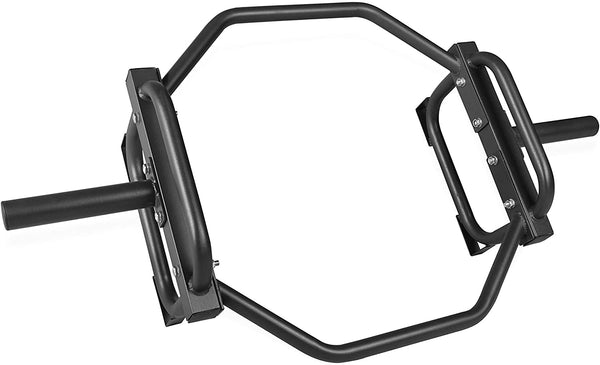Your Cart is Empty
January 02, 2024 3 min read
When it comes to weightlifting exercises, there are few more effective than the deadlift. This exercise has long been a staple of strength and conditioning programs, as it works the entire body from head to toe. But when doing deadlifts, what’s the best choice – the hex bar or the straight bar?
Shop The Collection: BarbellsBoth have their advantages, but the answer will vary depending on your goals, experience level, and any physical limitations you may have. In this article, we’ll take a look at both of these bars, compare their benefits and drawbacks, and provide some tips to help you decide which one is right for you.
 Shop The Gear: CAP Barbell Olympic Trap Shrug Bar, $99.99 USD
Shop The Gear: CAP Barbell Olympic Trap Shrug Bar, $99.99 USD
The hex bar (also known as a “trap bar”) is a weightlifting tool shaped like a hexagon. It typically features two handles that allow lifters to stand in the center of the bar, rather than outside of it. This allows lifters to keep their arms and shoulders in a more neutral position during a deadlift – a key factor for those with shoulder or back issues.
The hex bar also provides a more natural range of motion for most people, as it allows them to stand upright with less stress on their lower backs. This makes it an excellent option for those who have back injuries or have difficulty maintaining proper form on traditional straight bar deadlifts.
In addition, the hex bar allows lifters to lift heavier weights than they could with a straight bar. This is because the bar itself is balanced, allowing the lifter to lift more weight without having to worry about their balance being thrown off by an uneven bar.
The straight bar is the traditional weightlifting bar used for deadlifts. It features two handles on either side of the bar, allowing lifters to grip the bar with both hands and pull it up off the floor. The straight bar can be used with a wide variety of weight plates, making it a versatile tool for all levels of lifters.
One advantage of the straight bar is that it allows lifters to work different muscle groups. With a hex bar, lifters must use the same muscles over and over again. With a straight bar, however, lifters can focus on different muscles by altering their grip on the bar. For example, a wider grip will target the lats and upper back, while a closer grip will target the traps and forearms.
Straight bar deadlifts are also great for developing core strength and stability. When done properly, the lifter must engage their core to maintain proper form and prevent their spine from bending. This helps to build a strong foundation for all other lifts.
Ultimately, the decision of which bar to use will come down to personal preference and what type of results you want to achieve. If you’re looking for a way to reduce strain on your lower back and shoulders, then the hex bar may be the better option. On the other hand, if you’re looking for a way to develop your core and target specific muscle groups, then the straight bar is the way to go.
If you’re just starting out with weightlifting and aren’t sure which bar to use, it’s a good idea to get advice from a qualified trainer. They can help you assess your fitness level and recommend the best type of bar for your needs.
When it comes to deadlifts, the hex bar and straight bar both have their advantages and disadvantages. Ultimately, the right bar for you will depend on your fitness level, goals, and any physical limitations you may have. So, before you start lifting, make sure to do your research and consult a qualified trainer to ensure you’re using the right bar for your needs.